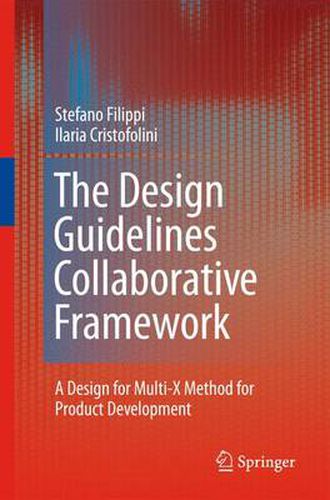Readings Newsletter
Become a Readings Member to make your shopping experience even easier.
Sign in or sign up for free!
You’re not far away from qualifying for FREE standard shipping within Australia
You’ve qualified for FREE standard shipping within Australia
The cart is loading…






This title is printed to order. This book may have been self-published. If so, we cannot guarantee the quality of the content. In the main most books will have gone through the editing process however some may not. We therefore suggest that you be aware of this before ordering this book. If in doubt check either the author or publisher’s details as we are unable to accept any returns unless they are faulty. Please contact us if you have any questions.
In the industrial design and engineering field, product lifecycle, product development, design process, Design for X, etc., constitute only a small sample of terms related to the generation of quality products. Current best practices cover widely different knowledge domains in trying to exploit them to the best advantage, individually and in synergy. Moreover, standards become increasingly more helpful in interfacing these domains and they are enlarging their coverage by going beyond the single domain boundary to connect closely different aspects of the product lifecycle. The degree of complexity of each domain makes impossible the presence of multipurpose competencies and skills; there is almost always the need for interacting and integrating people and resources in some effective way. These are the best conditions for the birth of theories, methodologies, models, architectures, systems, procedures, algorithms, software packages, etc., in order to help in some way the synergic work of all the actors involved in the product lifecycle. This brief introduction contains all the main themes developed in this book, starting from the analysis of the design and engineering scenarios to arrive at the development and adoption of a framework for product design and process reconfiguration. In fact, the core consists of the description of the Design GuideLines Collaborative Framework (DGLs-CF), a methodological approach that generates a collaborative environment where designers, manufacturers and inspectors can find the right and effective meeting point to share their knowledge and skills in order to contribute to the optimum generation of quality products.
$9.00 standard shipping within Australia
FREE standard shipping within Australia for orders over $100.00
Express & International shipping calculated at checkout
This title is printed to order. This book may have been self-published. If so, we cannot guarantee the quality of the content. In the main most books will have gone through the editing process however some may not. We therefore suggest that you be aware of this before ordering this book. If in doubt check either the author or publisher’s details as we are unable to accept any returns unless they are faulty. Please contact us if you have any questions.
In the industrial design and engineering field, product lifecycle, product development, design process, Design for X, etc., constitute only a small sample of terms related to the generation of quality products. Current best practices cover widely different knowledge domains in trying to exploit them to the best advantage, individually and in synergy. Moreover, standards become increasingly more helpful in interfacing these domains and they are enlarging their coverage by going beyond the single domain boundary to connect closely different aspects of the product lifecycle. The degree of complexity of each domain makes impossible the presence of multipurpose competencies and skills; there is almost always the need for interacting and integrating people and resources in some effective way. These are the best conditions for the birth of theories, methodologies, models, architectures, systems, procedures, algorithms, software packages, etc., in order to help in some way the synergic work of all the actors involved in the product lifecycle. This brief introduction contains all the main themes developed in this book, starting from the analysis of the design and engineering scenarios to arrive at the development and adoption of a framework for product design and process reconfiguration. In fact, the core consists of the description of the Design GuideLines Collaborative Framework (DGLs-CF), a methodological approach that generates a collaborative environment where designers, manufacturers and inspectors can find the right and effective meeting point to share their knowledge and skills in order to contribute to the optimum generation of quality products.